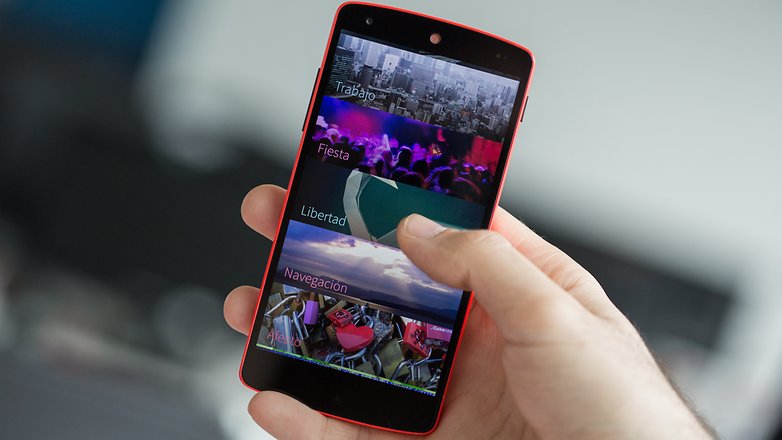Smartphone manufacturers have little choice. Android offers a large user base. Play Store and Google services provide free functionality. But what if Google doesn't play along anymore? Or if you want to offer your customers an alternative to Google or even Android? What happened to alternatives like Ubuntu, Sailfish OS, Plasma Phone or Tizen? An overview.
In the light of the Huawei vs USA scandal, rumors are spreading that the Chinese tech giant is working on its own alternative to Android. Many others have tried this before. But even established big names such as Microsoft or Samsung have not yet been able to gain ground on the smartphone market with their developments such as Windows Mobile or Tizen. Nevertheless, the honorable mention of some Android alternatives is worthwhile.
Android, but without Google
The open source core of Android can also be operated without Google components. Fairphone Open is the best solution and you can also try it out with many smartphones available in stores. /e/ OS is also available as a version of Android without Google, and evens sells refurbished phones with it pre-installed. And you can remove Google from Android, as we did when we asked ourselves ...
- How does Android feel without Google?
iOS
iOS is largely identical to Android in terms of app selection and functionality. A few product philosophical differences as well as design differences to Android cannot be denied. iOS has a huge catch, however: Apple doesn't outsource it to third parties.
While there are so-called hackintoshs for PCs, i.e. Mac OS on non-Macs, nothing comparable has become known for smartphones. Hackin-iOS-Smartphones would be a violation of Apple's guidelines and would cost a lot of money. Those who want iOS must buy Apple.
Sailfish OS
We had tried Sailfish ourselves and were impressed. The operating system, which is also largely open source, can open Android apps from APK files, so in theory it has the same app variety as Android smartphones right from the start. But this feature turns out to be not very reliable: expect some crashes.
Even if Jolla, the company behind Sailfish, is trying hard with the Jolla Harbour, there are obviously no swarms of developers yet who are enthusiastic about his system. There are large customers for the operating system in China. An electronics manufacturer wants to operate its televisions and all smart home devices with a display with Sailfish. Since Sailfish offers white label licenses, we could already use Jolla devices without knowing it.

In contrast to Google, Jolla is therefore holding back with his own marketing interests at Sailfish and rather distinguishes himself as a pure software supplier. The open source approach allows upstream by the customer. So if a Jolla customer in Russia improves the performance of the Smartwatch user interface, this update will also be made available to customers from South America. Jolla does not have a Google-like obligation to pre-install an extensive software suite with extensive customer data collection.
- About Sailfish OS
Ubuntu Touch
Ubuntu Touch has failed gloriously. After an unsuccessful IndieGoGo campaign with the exorbitant goal of 32 million dollars, the only use case called Ubuntu Edge went up in flames even before its launch. With the Ubuntu Touch surface, the Edge was supposed to accommodate the form factors PC and Smartphone in a single device - as early as 2014. No one has really succeeded in doing so to date.
In 2017 even Ubuntu mother Canonical pulled the plug on Ubuntu Touch. But as so often in the open source world, a few volunteers have kept their courage. You maintain a fork of the system under UBports. A more recent project now has a much better chance of achieving the old goal of Ubuntu Touch with its product.
- Ubuntu Touch Homepage
Plasma Mobile
The Plasma Mobile used by hardware manufacturer Purism, among others, is based on the desktop environment KDE for Linux. The Purism smartphone Librem 5 should be able to be used like a normal PC, if it is finished one day. And then Ubuntu Touch should be installed on it.
The desktop environment KDE enjoys a large user base in the Linux world and has ample influence on application developers. With Plasma, it offers the latter the tools to convert existing programs into apps. It is hoped that desktop and mobile applications will finally work hand in hand on a single device, just as the Ubuntu Edge vision once envisaged.
- Plasma Mobile Homepage
Bottom line
The trend is towards openness. Jolla and the mostly open-source Sailfish OS are popular in Russia, China and South America, but fly completely under radar in the West. Ubuntu touch heirs UBports and Plasma, on the other hand, depend on the success of open hardware. The spearhead here is the Purism Librem 5. If the first truly free smartphone turns out to be a success, it could herald a new era of digital freedom.
Until then, we will be dependent on US closed-source hardware in the form of Qualcomm or Apple chipsets or software such as Google Apps or iOS and will only be able to escape into an alternative with much effort and courage.




